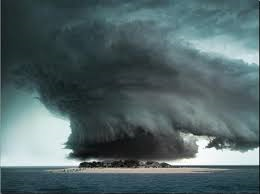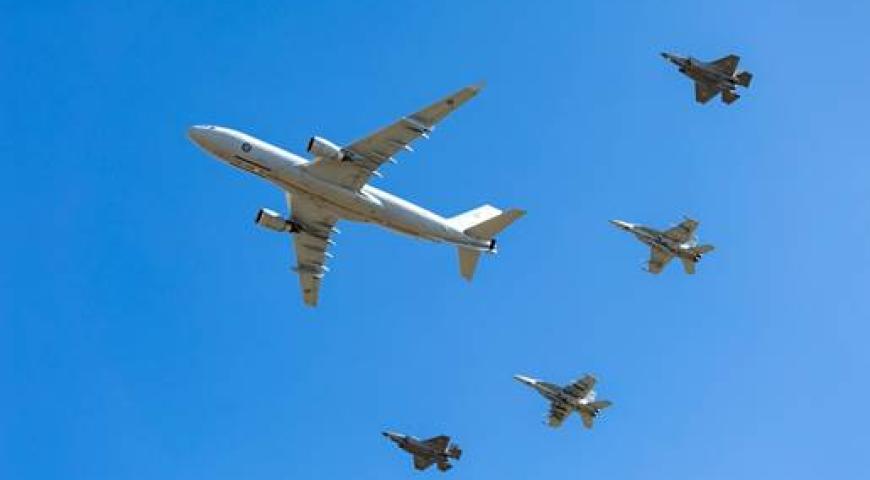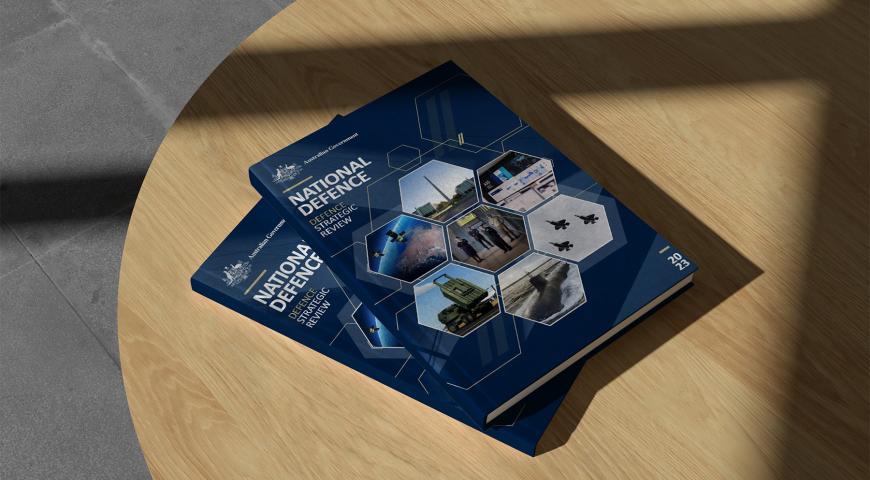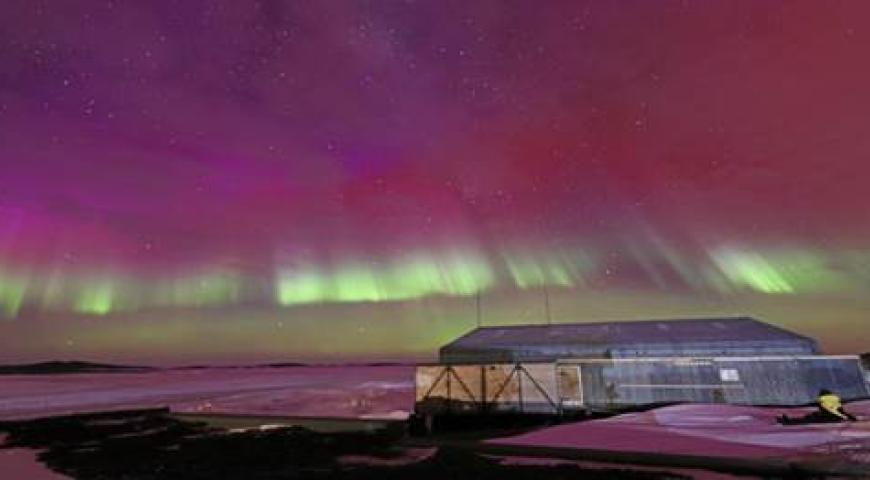I am sometimes asked about future national security challenges. This evening I should like to provide a framework for thinking about this question. I do so with 32 years of experience in the field of national security, defence and international affairs – a modest basis for claiming that I have seen enough of the past to perhaps have something useful to say about the future.
Tonight I present a list of seven ‘gathering storms’ of the 2020s, ranked by their intrinsic importance as risks to be mitigated, having regard both to their likelihood (which, in a number of cases, would be mercifully low) and their consequences for our economy, society and, in some cases, way of life. This is a framework for thinking about risk. It is not a list of predictions. Nor is it a gratuitously drawn ‘dark view’ of the world, designed to frighten children, readers of this city’s newspaper, or the subscribers of certain commentary blogs. Here is the list:
- The prospect of Great Power war will in the 2020s approach, but not reach, a level of probability last seen in the mid-1980s – occasioned not by design on the part of any Great Power, but by the risk of strategic miscalculation and operational misadventure as the Great Powers project military power around Eurasia and its maritime environs, and across the Pacific, Indian and Atlantic Oceans. No rational actor ever seeks a catastrophic war, and yet history tells us that such wars occur. We often then argue later – for decades, if not centuries – about why they started, and what it was thought might be achieved by going to war.
- The employment of chemical, biological, radiological or nuclear weapons outside of Great Power war, not necessarily by readily-identifiable actors. As with the prospect of major war, this would be a mercifully unlikely contingency but one which needs close attention, especially in relation to the potential use by terrorists of readily transportable but difficult-to-manufacture biological weapons (including those which could occasion a severe pandemic) or nuclear devices which could fit into a small container.
- A cyberattack with economy-wide ramifications, targeting the nation’s financial, energy, water or transportation systems. Unfortunately, this contingency is more plausibly likely, notwithstanding the significant efforts and investments that have been undertaken by governments and the private sector in recent years. Much more needs to be done in this area. Our traditional ways of thinking about deterrence and defence simply do not map directly across to the cyber realm. The negligible imposition of costs for malicious conduct in the cyber domain will embolden yet more malicious conduct—which is ever ratcheting up, and which will, in the 2020s, make the cyberattacks of the past decade seem like the first dogfights in the earliest days of aerial combat.
- While the deliberate subversion of our democratic institutions and our social cohesion is an old enemy – seen in the past in political warfare and subversion, espionage and disinformation – it is taking on new forms, especially in this highly connected age. In the 2020s, we are likely to see regular attacks on our elections, the spread of disinformation for geostrategic purposes, and deliberate attempts to fracture our social cohesion and unity. Compounding this risk is the rise of social media and the ‘digital industrial complex’, whose proponents and beneficiaries have managed to seduce many with the false belief that connectivity without values enables the untainted expression of ‘popular will’; (free of the taint of power and manipulation) and creates a platform for a supposedly ‘authentic’; expression of self. Instead, connectivity has become a new site of power, monetised for the enrichment of the self-interested proponents of its supposedly liberating qualities.
- The security implications of the world’s ungoverned and dangerous territories, which host terrorist groups, as well as insurgents who are at war with the nominal state authority of the territory that they occupy. These territories, and the disputes which are fought across them, will continue to generate the mass displacement of peoples, as will poverty, hunger, water and resource scarcity, and a changing climate, which will have to be thought of as a systemic risk factor. Fragile or non-existent state sovereignty and control over territory co-exists with the interrelated challenges of terrorism, insurgency and the mass movement of people who are seeking protection from violence and conflict. We treat these problems separately at our peril.
- Radical extremist Islamist terrorism, which will continue to mutate and evolve, posing risk abroad and at home. While the defeat of ISIS is to be welcomed, its ideology will fall on fertile ground elsewhere. Worryingly, al-Qa’ida would strike again if it could. Of course, home-grown terror cells and lone wolves, and returning foreign terrorist fighters, continue to be a very high priority concern.
- The globalisation of transnational, serious and organised crime which in the 2020s will threaten national security and public safety in hitherto unseen ways – in terms of the volume of illicit narcotics and other illicit goods crossing our border, the incidence of the trafficking and smuggling of people, the level of violent criminality that we are likely to see, the threat to our revenue base (as increasingly sophisticated techniques are employed to thwart taxation and customs detection and enforcement efforts), and increasingly worrying attempts to infiltrate our public institutions and to corrupt officials in order to create an ever more permissive environment for crime.
Again, to stress: this is not a randomly generated list of ‘scares’;. It is an evidence-based risk framework for thinking about national security in the 2020s, and for making decisions about capabilities, strategies, plans, operations and resource allocation.
Lest it be thought that this represents a sinister and cynical ‘dark view’; of humanity, let me stress that I am a strategic optimist. If threats are realistically assessed, if risks are properly appreciated and managed, if all do their duty, if the nation is engaged intelligently on the challenges that lie before us, in a discourse which brings together parliamentarians, journalists, business leaders, academics and others, if difficult choices are taken in good time, then we will be able to navigate these storms, ever hopeful of clear skies and calm seas.
If, however, we take the path of neglect and apathy, if those so charged fail in the discharge of their duties, if the nation does not engage purposively, and in good time, then I do fear that one or more of these storms will break savagely upon an unsuspecting and unprepared populace. Were that to happen – and I refuse to believe that those of us who are charged with acting would so wantonly fail in our duty, but were that to happen – then I fear also that the calamity would be too great to bear, and there would follow significant social and economic dislocation. I especially fear that were an unprepared Australia to be faced with dealing with an unheralded cataclysmic event, one which might shake the nation to its economic, social and moral foundations, then the urge for draconian and excessive reaction might prove to be too great, and in ways too injurious to our precious liberties. Over-arming the state could be as great a danger as under-powering it. In policy, as in life generally, we tend to over- and under-correct at the wrong times, when we should in fact typically operate in counter-cycles. All the more reason therefore to honestly and resolutely prepare for the storms ahead – avoiding them where we can, and riding them out where we cannot.
I should like to step back and provide a personal historical perspective to these challenges. My thesis is this – we have seen and dealt with these types of challenges before. What will challenge us in the 2020s will be their concurrency, confluence and interdependencies. The risks they occasion will have to be both managed separately and collectively, in part and in aggregate.
When I joined the Department of Defence (specifically, the Defence Intelligence Organisation) in January 1987, we were closer in time to the Cuban Missile Crisis of 1962 than 1987 is to us today – that is we were 25 years beyond the Cuban Missile Crisis, while today we have moved 32 years past 1987. The focus at the time was on superpower competition and confrontation. Indeed my first three assignments were research tasks associated with the Intermediate-Range Nuclear Forces Treaty, which was signed later that year in 1987, Soviet fleet movements in Southeast Asian waters, and the prospective shape of US-Soviet naval confrontation in the northern Pacific. I soon after moved into an area in Defence which dealt with the Joint Facilities at Pine Gap near Alice Springs (NT), North West Cape near Exmouth (WA) and Nurrungar near Woomera (SA), where we did highly classified work (much of which remains classified to this day), which was concerned with strategic nuclear forces, space and missile activities, and other very sensitive matters.
Tom Clancy had just published Red Storm Rising in 1986, and would soon see another of his books made into a movie in 1990 – The Hunt for Red October. Art was imitating life, as there had been a nuclear scare in 1983 – about which we know more today due to the release of classified documents and extensive research by scholars in recent years. We now know that the Soviet leadership was convinced that a NATO exercise to be held in 1983 – Able Archer 83– was a ruse for a possible surprise first strike on the Soviet Union. They were perilous times.
During this period – from August 1990 to February 1991 – the US and its allies fought the First Gulf War with the aim of evicting Saddam’s Iraq from Kuwait, which it had invaded in August 1990. For the first time, the world saw an awesome display of US conventional military superiority, which was enabled by advanced technologies (such as night-fighting and stealth capabilities), unrivalled intelligence, surveillance and reconnaissance systems and precision strike weapons.
Today, anyone who is aged under 30 is likely to be vaguely aware (if at all) of that era through the lens of popular culture – perhaps through the movie Atomic Blonde (2017). They might even know that the German rock ballad 99 Luftballons (1983) by Nena was about accidental nuclear war, but perhaps not. In any event, this perilous era vanished it seemed in a moment, as if it had been but a dream. From the fall of the Berlin Wall in November 1989 to the collapse of the Soviet Union in December 1991, events moved with astonishing speed. The soundtrack of the decade was rounded off with another German rock ballad – Wind of Change by the Scorpions (1991), an anthem of hope and optimism after a century of tragedy.
Looking back, even though we did not know it at the time, we enjoyed five minutes of strategic sunshine in the early 1990s. It seemed as if the liberal democracies had prevailed and the spread of capitalist democracy would be unchecked – perhaps finally bringing the ‘End of History’; into view, to reference Fukuyama’s famous book of 1992. There were voices of dissent to be sure – Huntington, Mearsheimer and Kaplan to name three – but generally the following formula came to be taken for granted: defence spending could be reduced, as Great Power war had been foresworn; authoritarianism had been defeated and democratisation would prevail; technology and communications (including the new technology known as ‘the Internet’;) would bring us closer together; globally-agreed rules would dictate behaviour, and the rules-based order which had emerged out of the Second World War could finally be universalised; Russia and China would integrate relatively easily into the global trade and investment system; and the world would be enmeshed ever more tightly through the spread of global supply chains, financial markets and networks of trade, investment and commerce.
“My only regret is that I did not stick to my instincts and insist that the deterioration of our strategic circumstances would occur even more quickly…”
To continue with some personal reflections, after the fall of the Soviet Union and the end of the Cold War, I moved to the Department of the Prime Minister and Cabinet in 1992, and then into the Foreign Minister’s Office in 1993. In both roles I worked on the Uruguay Round of world trade negotiations and the proposal, which the Australian Government championed, for there to be held an annual summit of APEC Leaders, which was realised in 1993. The annual gathering of the great, good and famous at the World Economic Forum in Davos became institutionalised at this time, with its particular brand of denationalised globalism put on display at the start of every calendar year.
Looking back over a quarter of a century to that time, the world is so different. The sense of possibility seems to have passed, just as the blue sky, glimpsed briefly during a break in a storm, disappears when steely grey clouds close the heavens from view. Of course we should take stock of the positive gains from this time. Today the global order is indeed more connected, networked and interdependent than at any point in history. Poverty has been reduced, living standards have improved, and technological progress has created positive opportunities in terms of saving labour, connecting people and enabling creativity. These are positive developments, and not marginally so. However, it did not entirely work out as imagined in those heady days of the early 1990s, when it felt as if the world could be made anew, and risks and challenges emerged after the fall of the Soviet Union and the end of the Cold War which were not properly anticipated and managed.
Two major developments then emerged in the early 2000s which reset the game, forever I suspect. I will not deal with them in depth, as they each warrant a separate address. First, the attacks on 11 September 2001 brought radical extremist Islamism to the fore, in the most spectacular way imaginable. Starting with operations in Afghanistan, we embarked on what some have called the ‘Long War’; against extremist Islamist terrorism, which placed a premium on counter-terrorism and counter-insurgency capabilities and operations. We became very familiar with al-Qa’ida, and later ISIS, as well as domestic home-grown terror. Our militaries reorganised themselves and reacquainted themselves with irregular warfare, with a consequential diminution of focus on conventional warfare. This is a well-known part of the story for such an audience, so I will not dwell here.
At around the same time, Russia and China started to seriously accelerate investment in their advanced conventional military capabilities, including in relation to power projection, a trend which continues to this day. In the 2020s, US military superiority will be increasingly challenged. Greater potential costs are likely to be imposed on US freedom of action. This will, in all likelihood, affect the calculus in the 2020s for how and where the United States employs military power around Eurasia, and across the Pacific, Indian and Atlantic Oceans.
Moreover, we did not anticipate how Eurasia would emerge in the 21st Century as an increasingly coherent and salient strategic system, a hundred years after Mackinder set out his thesis that this would happen. New patterns and networks of trade, investment, infrastructure, telecommunications, energy and migration across and around Eurasia – which will become more pronounced as the Arctic Ocean becomes a zone of increasing importance – began in the 2000s to upend the traditional strategic advantage which had been enjoyed since the 15th Century by maritime trading powers. This trend has become entrenched over the past two decades, and its consequences will be increasingly felt across the board in the 2020s. Relatedly, we are seeing the deliberate use of investment, industry and research policies to create strategic advantage and technological superiority for the purposes of Great Power competition, which will intensify in the 2020s. Notwithstanding these trends, it cannot be stressed often enough that China’s rise has been the most peaceful of any Great Power in 500 years – and all have a stake in ensuring that this remains the case.
By 2006, at which time I was the Deputy Secretary in Defence with particular responsibility for defence strategy and force planning, these trends were very much on our minds as we dealt with the twin challenges of the so-called ‘Long War’; and the prospect (however slim) of Great Power war. Across departments and agencies there were sincerely-held and widely divergent views about the future force structure of the Australian Defence Force, and especially whether to structure the ADF principally for low-intensity operations against insurgents and terrorists, or for maritime warfare against conventional adversaries in the defence of Australia, including a Great Power adversary which might seek to attack us as part of a larger military campaign against our principal ally.
Tonight is not the night to retell the story of what became the 2009 Defence White Paper, which was launched in May 2009, and which I was honoured to author. Regrettably, its conjectures and its prescription for a heavier, maritime-focussed ADF, which were greeted with incredulity at the time, have proven to be all too prescient. They are now the orthodoxy in defence planning. My only regret is that I did not stick to my instincts and insist that the deterioration of our strategic circumstances would occur even more quickly than the final document suggested. I decided then not to make the same mistake again over the rest of my career.
“We must, above all, hold fast to the supremacy of the law – without which there is only barbarism.”
Looking back over three decades and then casting forward to the 2020s, I can see a dark kaleidoscope of future stormy possibilities which, if not navigated successfully, might come to pass to our great cost: I can see a Red Storm Rising (although the likelihood of a Great Power war, especially involving nuclear weapons, remains thankfully low, but it is not unthinkable); terrorist use of a biological or nuclear weapon; a massive cyber-attack; increasing attacks on our democratic institutions and our social cohesion by subversive means; the persistence of ungoverned and dangerous territories which generate terrorism, insurgencies and the mass movement of peoples which will directly affect our national security; continuing attacks by adherents of radical, extreme Islamist ideologies; and criminality which is increasingly sophisticated, organised on a global scale, and difficult to attack.
In the face of these ill tidings, should we panic? Well, only if it helps. Otherwise, we should focus calmly and realistically on what lies ahead. We should above all draw on the strength of our traditions, values and history, which show us above all else that courage, cunning and organisation in the face of adversity will always prevail over the darkness, whether it takes the form of the tyrant, the invader, the terrorist, the saboteur, or the criminal who thinks nothing of selling death to a child. If we are sure of our values, confident in our abilities, certain of our arrangements, and unified in our work, we will prevail, as did our forebears in other stormy times.
Michael Pezzullo is Secretary, Department of Home Affairs following a machinery of government reorganisation in 2017. He was previously Secretary, Department of Immigration and Border Protection, and held senior roles in Customs, Department of the Prime Minister and Cabinet, and Department of Defence, as well as senior advisor roles to a foreign minister and a leader of the opposition.
Defence Mastery
Please let us know if you have discovered an issue with the content on this page.
Comments
Start the conversation by sharing your thoughts! Please login to comment. If you don't yet have an account registration is quick and easy.




